Mend and Make Do: Bode’s Sustainable Fashion
American quilts, Japanese kimonos, French linen and African strip-weave: these are just a handful of the vintage sourced fabrics that are gathered and upcycled by menswear designer Emily Adams Bode for her eponymous menswear brand Bode. This radical American designer is one of a generation who are transforming the face of the fast-paced fashion industry with a slow, sustainable approach to making clothing. Based in New York, Bode sources pre-loved fabrics from all around the globe, which are then hand-cut, quilted and embroidered by herself or her team of tailors to create unique, one-off garments that are as quirky and individual as the people who wear them. Bode also works with vintage markets and craftspeople around the world, supporting the indigenous skills that have been passed down through the generations.
From a young age, Bode showed an affinity for all things vintage. As a child growing up in Atlanta, Georgia, she remembers with fascination the thrift stores, markets and estate sales her parents would take her to. She says, “My mom and aunts … knew there was this heirloom aspect to collecting.” As a child she wore old beaded necklaces, and by high school she had moved on to wearing mostly vintage clothes, some of which were from her mother and grandmother’s own archives. Bode says, “My mom saved all of her vintage clothes, so things that were vintage in the ’70s—from the ’50s or ’20s—plus the things that were new, but [that] they knew to save. Like Pucci bras or Liberty swimsuits. They knew those were historic, in a way.”
These early foundational years cemented in Bode a respect for the rich history of fashion, and an awareness of the value – both historical and financial – in high-quality, well-made garments. While studying at Parsons School of Design and Eugene Lang College, Bode chose to specialise in menswear, an unusual choice for a woman, that has made her an outlier in the world of fashion. Bode explains her choice to focus on menswear came about in part because of this historical aspect of men’s clothing (and her own desire to wear menswear style tailoring): “I think it’s because of the utilitarian aspects of menswear. I love workwear-inspired clothing, and the pieces are made from boyish silhouettes… a lot of historical details are what I’m more so attracted to.”
When she established her business in 2016, Bode focused exclusively on making garments entirely from antique textiles, resulting in quirky, one-off garments that are a far cry from the usual identikit nature of so much contemporary fashion. Since then, Bode has continued to work with fabrics from all across the globe, sourcing rare finds that are often torn, worn out or badly damaged, and breathing new life into them through processes of mending, quilting, reconditioning, embroidery and patchwork. Just a handful of the fabrics she has worked with include New England quilts, French table linens from the 1920s, strip-woven cotton from Mali and deep blue indigo textiles from the Cote D’Ivoire. Bode can recall the history of every fabric she sources, and she sees her role as a storyteller, weaving together fragments of the past into a new future. “There’s a sense of history with each individual textile,” she says, “behind the mending, sewing, and different quilting methods.”
Sourcing fabrics is a collective process involving outside businesses, although Bode still thoroughly enjoys a good rummage herself, as she explains: “We… work with vintage dealers all across the world. I still enjoy sourcing it myself – whether it’s at flea markets or sometimes online. Usually, it’s sourcing during the summertime at fleas.”
Whether made by Bode herself, or her team of dedicated tailors, seamstresses and embroiderers, many months of time, care and attention go into making every garment in her collections, matching the high-quality longevity of the vintage textiles she works with. There’s a feeling that Bode is not only keeping history alive, but she’s also allowing it to be passed on again to another, younger generation, by making one-of-a-kind clothing that is built to last, and last.





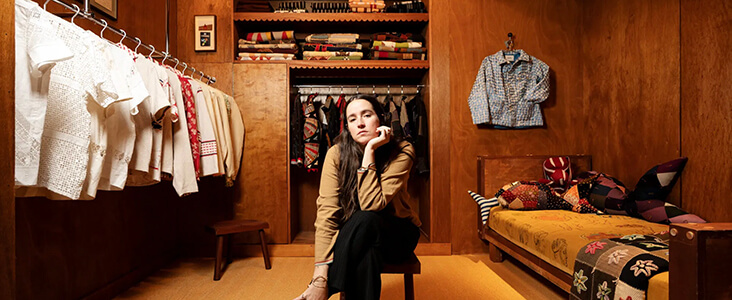

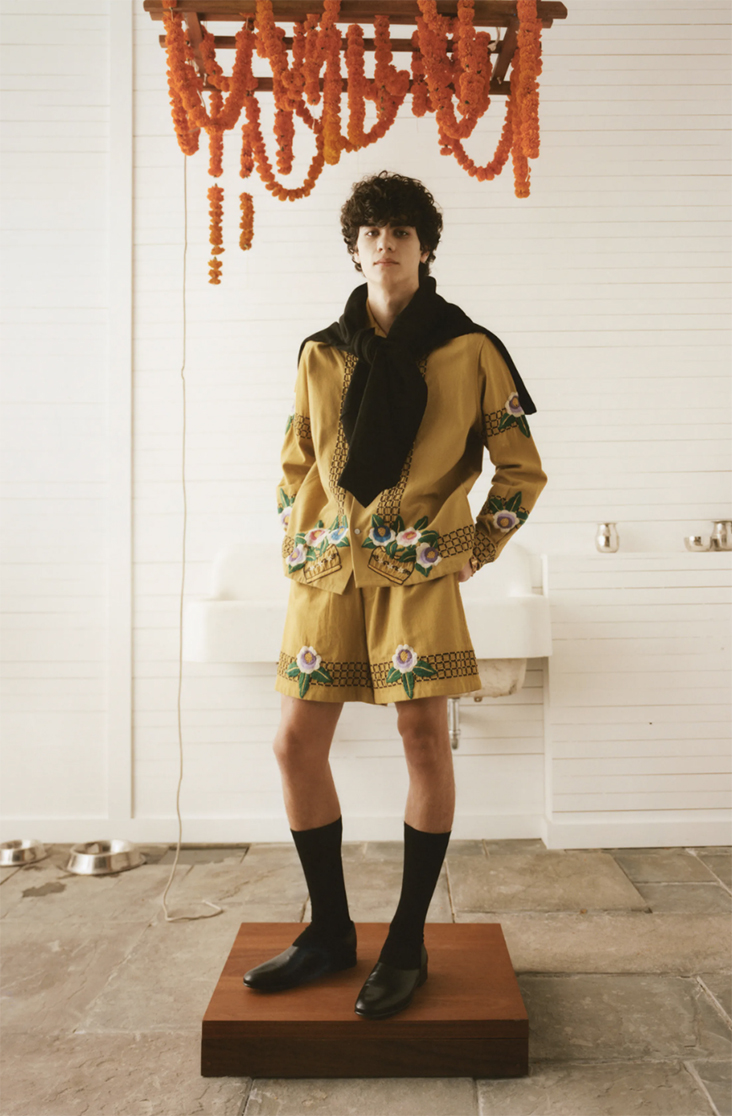
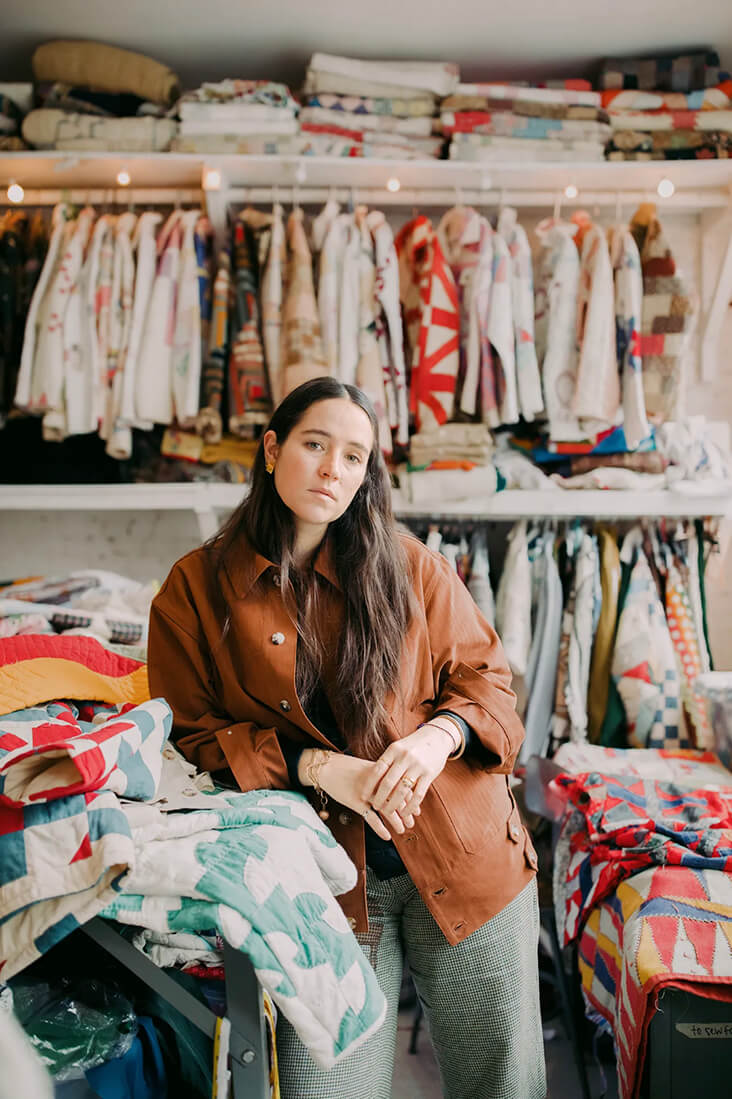
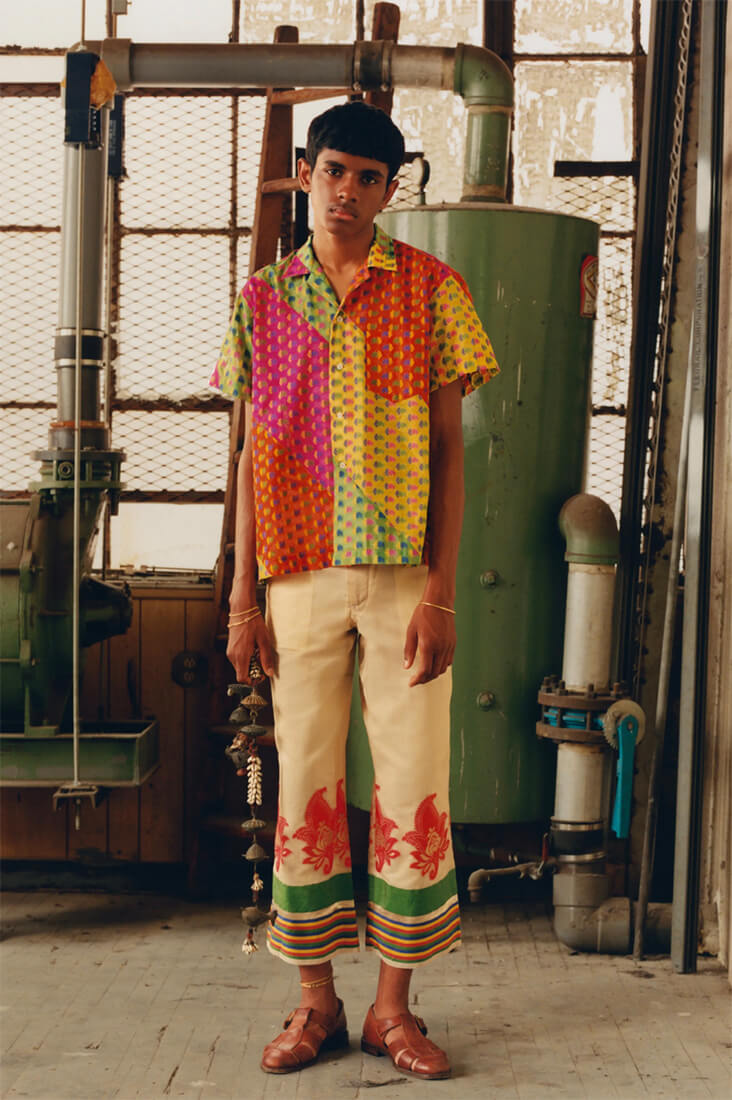
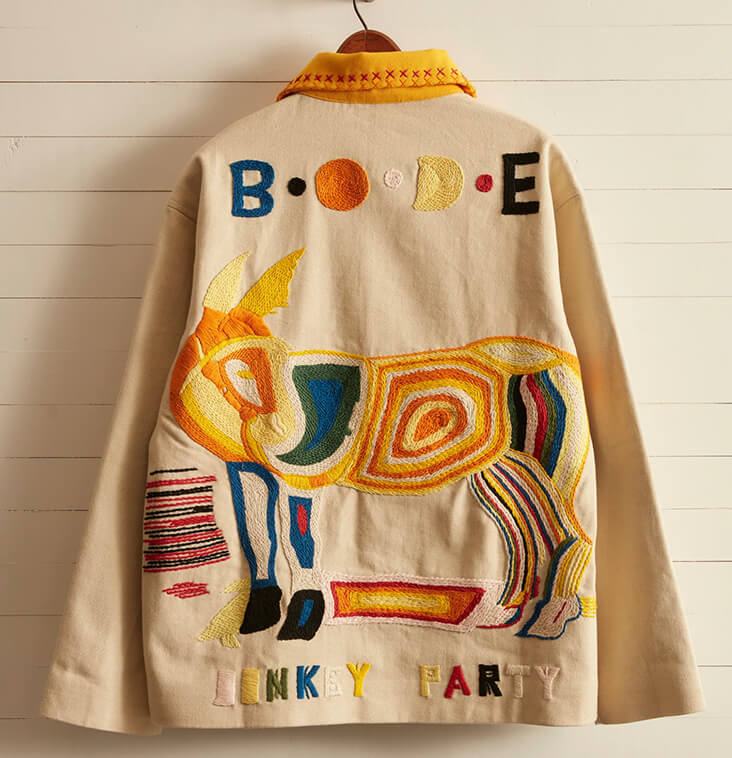








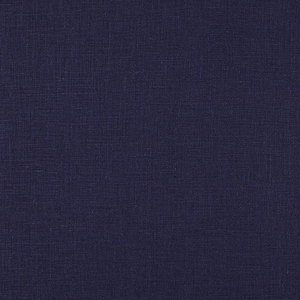





















One Comment
Carol Koch
Great article on this designer. I am visiting NYC this October and will definitely check out their store. I have collected old kimonos and remade them into pillows, vests, and things, but what I always liked was the inner tie trims and hand-stitched details, which I saved when deconstructing. I would love to see more of how Emily works.